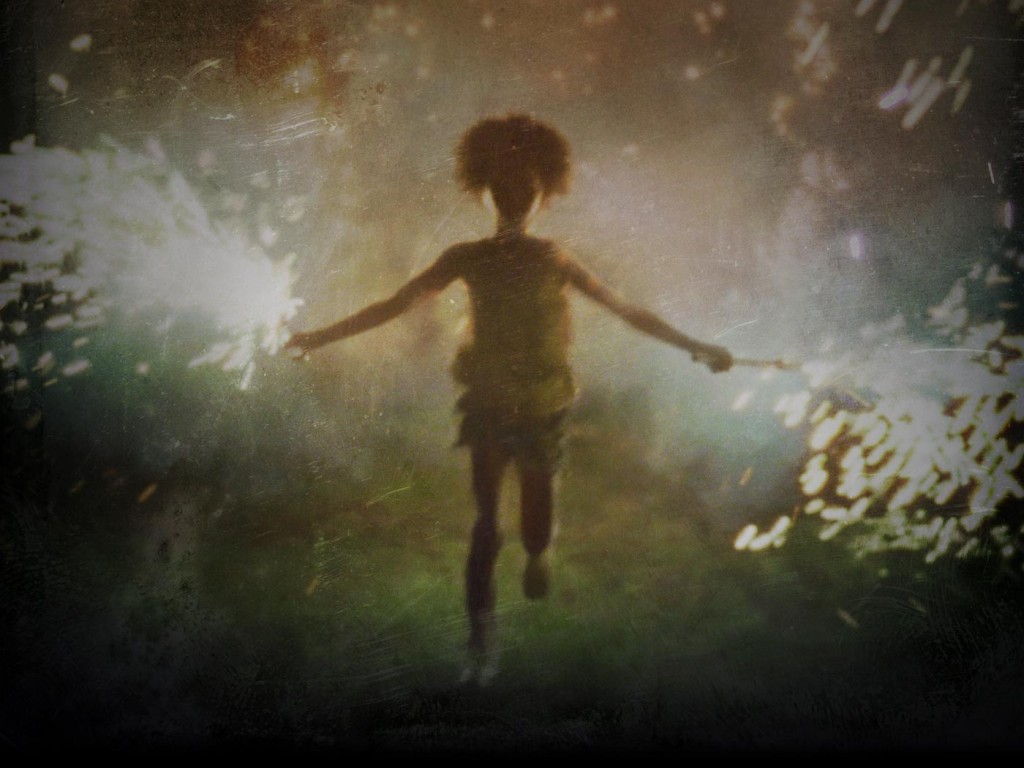Beasts of the Southern Wild is a dense, emotional film that has the dramatic achievement of being perhaps the first film to create a means to visualize climate resistance. We already have films like the mediocre The Day After Tomorrow that depict climate disaster. Beasts of the Southern Wild gives us a way to begin to imagine wild alternatives to governmentality, without sentimentalizing the prices that have to be paid for that. By mixing magical sequences with cinematic realism, it does for climate resistance what Pan’s Labyrinth did for anti-fascism.
The plot is intricate and so most reviews have concentrated on describing what happens in the lives of Hushpuppy (Quvenshané Wallis) and her father Wink (Dwight Henry) to the detriment of what is seen, heard and felt. Its scenario depends on the transformation of the climate and rising sea levels. But this is a visceral film, often quite literally, as in a lingering shot of an animal’s intestines, or the disease that kills Wink. It is filmed very tight, meaning that the screen is filled with whatever we are looking at with nothing else to distract us or any means to set it in context. Piles of crustaceans fill the screen, or thickets of dense vegetation, or masses of melting glacial ice. Even the air is thick with dust motes, glinting in the sun, or insect life. The crisp, empty space of the modern cinema is here overflowing with what Jane Bennet calls “vibrant matter.” It’s wild, unbounded and undomesticated.
Such visualization of wild space is resistant to neo-liberalism’s passion for order and its terror of a profit-less wilderness. The commodity drive exists to fill space, whether the private house or the public domain with commodities. To suggest that wild space is always already “full,” or perhaps better, occupied, is to say that maybe the need is not so clear.
In the houses built by the residents of the Bathtub, as they call their low-lying Gulf island, poverty registers as an accumulation of material objects in a small space. The risk of romanticizing deprivation is clearly present. It is negotiated by a contrast with the spaces of governmentality, when the Bathtub is evacuating for “health” reasons after a hurricane. The sanitary but depressing geometric spaces of the shelter show those who don’t have to live in them why homeless people often avoid such spaces. It further suggests that having Hushpuppy narrate the story is not a “child’s eye view,” as most reviews suggest, but the wild view, the untrained and unrestrained way of seeing. Like Ofelia in Pan’s Labyrinth, Hushpuppy sees differently because she refuses the discipline and domination around her.
Wild seeing allows Hushpuppy to visualize her absent mother as or at a lighthouse. There’s a seeming dream sequence when she and the other children visit the lighthouse and find it to be a kind of speakeasy-cum-brothel, where the women all desire to mother the children. They don’t stay, it’s just a trip. And then there are the aurochs, prehistoric creatures, frozen into the ice, who come back to life as the glaciers melt. Hushpuppy can see the aurochs, just as we all breathe atoms of prehistoric air released by ice melt.
The Bathtub folk choose to remain in their flooded and devastated wild dwellings, even at great cost to personal health. The vibrancy of this vitalism is expressed by the driving Cajun soundtrack, one of many similarities between Beasts and Treme. Disaster survival and the physical deprivation that comes with it can, it is suggested, generate meaningful alternatives.
For all the dynamism of this wilding, Beasts is a film about loss and it leaves you feeling devastated. Wink dies and Hushpuppy walks across a flooded causeway into our mutual uncertain future, where the waters are rising, and we don’t know what to do or how to live. This isn’t a perfect film. It begins the possibility of imagining a re-wilding of social space, of the costs we are going to pay as living bodies for the climate change caused by the phantoms of financial debt, and of new ways to visualize that situation. Go see it.

